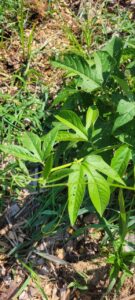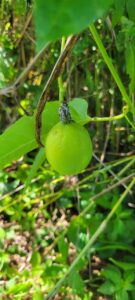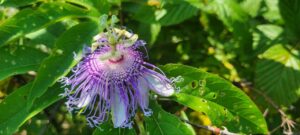


Here in early August in East Tennessee, passionflower is flowering and fruiting, depending upon local conditions.
This is one of my favorite foraging finds – most parts of the plant are edible, as well as having medicinal benefits. In addition, it’s an incredibly unique flower that captures the eye when exploring the land.
Passionflower, also known regionally as Maypop, is a perennial vine that climbs six to eight feet and usually sets a half dozen or so fruit per vine. They’re commonly found in unmaintained areas, old pastures and at sunny forest edges. It’s one of my favorite plants to add into the vining layer of a food forest or pollinator garden.
The flowers are edible (make sure there’s no bees hanging out on it!) and should you find the fruit, wait until it’s a bit soft and wrinkled before you harvest it. You can peel off the outer layer and eat the pulp and the seeds. Some folks prefer to make jellies or juice them and add to smoothies. Depending on soil and microclimate conditions, they may taste sweet or slightly tart.
Herbalists will dry the flowers and use it when a sedative effect is needed and a poultice of the roots have various folk uses that include addressing inflammation, cuts and earaches.
Keep an eye out for this groovy specimen and cultivate it on your land – it’s hardy in zones 7 to 11. I suspect that if you save seed, it could be grown as an annual in climates further north.
Further reading available here: Passiflora incarnata Maypops – Passion Flower, Purple passionflower, Apricot Vine, Maypop, Wild Passion Flower, Purple Pa PFAF Plant Database
